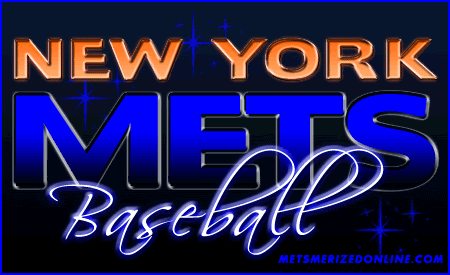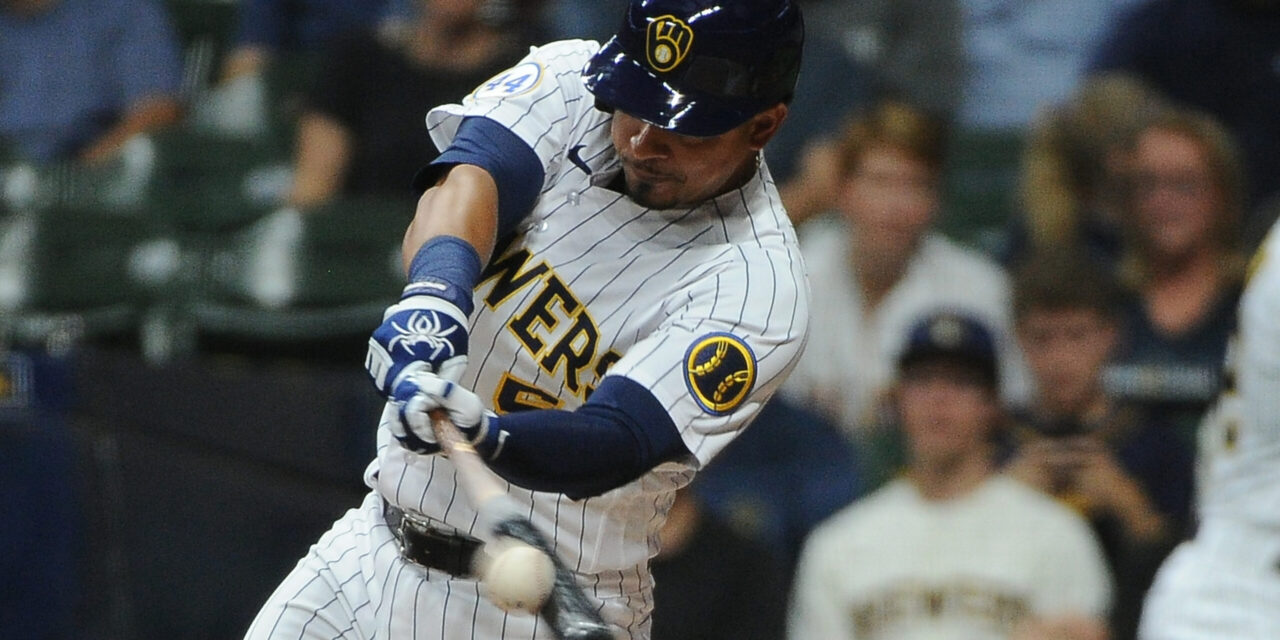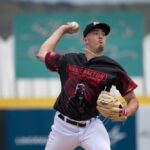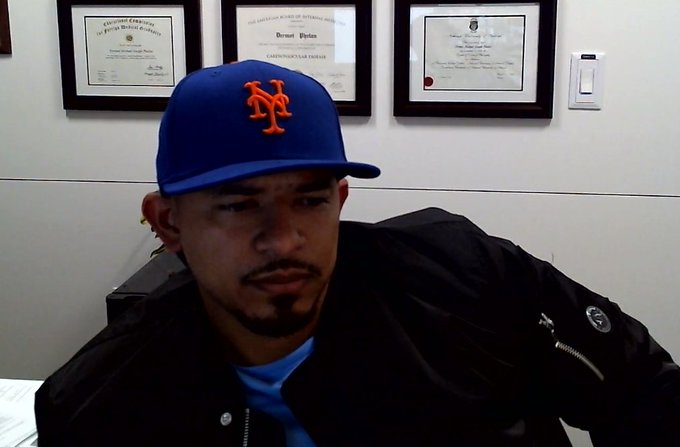
Regardless of what happens whenever the MLB lockout ends, the New York Mets will be taking the field this upcoming season with a revamped offense. Among the players brought in to help change the club’s outlook in this department is infielder Eduardo Escobar.
The 33-year-old veteran signed a two-year, $20 million contract in November, which also includes an option for 2024. Considering his historical production, which includes four seasons of 20-plus home runs and three years with an fWAR of at least 3.0, it seems like this deal could end up being a bargain. He can slot in at either second or third base depending on what New York needs, and he’s fresh off a 3.0-fWAR campaign thanks to a .253/.314/.472 line with 28 homers and 90 RBI.
In advance of Escobar’s first season in Flushing, here are three statistics worth monitoring throughout 2022.
Plate Discipline
Over the course of his career, Escobar has shown that he likes to swing the bat. Since debuting in 2011, his 51.2% swing rate is among baseball’s top 90 when looking at more than 500 qualified hitters. This has typically been accompanied with a high chase rate, but it’s an area of his game he’s consciously improved in recent years. The good thing, too, is that he hasn’t sacrificed his aggressiveness within the strike zone while making those improvements.
Here’s a look at how Escobar’s chase rate (O-Swing%) and his swing rate on strikes (Z-Swing%) have progressed since 2014, which was his first full season’s worth of plate appearances in the big leagues. I’ve added in his overall contact rate and swinging-strike rate just for fun, as well.
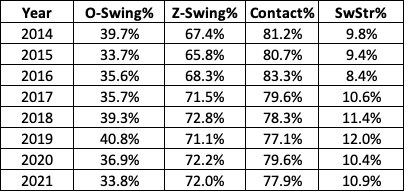
So, while his chase rate has been below 34.0% just twice in the last eight years, one of those occurrences just happened in 2021. And after watching this rate increase each year from 2015 to 2019, it’s decreased in each of the last two seasons, which is the first time he’s done that in his career. It’s also encouraging to see Escobar stay consistent in the strike zone while going on this roller coaster on balls outside the zone. Keeping that swing rate between 71.1% and 72.2% is pretty impressive, I’d say.
His quality of contact has also ticked upward in recent years. Between 2011 and 2017, Escobar posted a hard-hit rate above 30.0% once (31.4% in 2017). Since 2018, though, he’s posted a hard-hit rate above 34.0% three times (38.2% in ’18, 41.3% in ’19, and 34.2% in ’21).
Home/Road Splits
I knew Escobar has enjoyed a few solid years at the plate since his first season of 20-plus homers with the Minnesota Twins in 2017. However, it feels like his overall production has gone under the radar a bit. What did catch my eye was that these performances have happened while calling places like Chase Field and American Family Field (it’s still Miller Park to me) home.
Those are two ballparks where offense has typically thrived in recent years, and ESPN’s park factors confirm that was the case again in 2021. So naturally, my next thought was whether or not his power numbers were indirectly a product of where he played his home games. For this exercise, we’ll look at Escobar’s last two full seasons — he hit 35 homers in 2019 for the Arizona Diamondbacks before hitting another 28 in 2021 between Arizona and Milwaukee.
He was better overall hitting at home (.891 OPS, 118 wRC+) than he was on the road (.774 OPS, 97 wRC+) in 2019, but it was much more even in the power department. At home, he slugged 18 homers with 58 RBI, while he hit 17 dingers with 60 RBI on the road. It was a similar story in 2021 — he was better at home (.819 OPS, 114 wRC+) than on the road (.753 OPS, 99 wRC+), but his power was much more down the middle (15 homers and 52 RBI at home, 13 homers and 38 RBI on the road).
Judging from his Expected Home Run data via Statcast, hitting dingers at Citi Field shouldn’t be a problem, but it’ll be something to keep an eye on since this will be an adjustment.
Performance With RISP
As any Mets fan who has watched games consistently in recent years can attest to, New York hasn’t had much trouble getting guys on base. Getting them around to score? Especially when they’re on second or third base? Well, that’s been a huge issue. The 2021 season was more of the same, as their team .704 OPS ranked 26th in baseball. This is an area of Escobar’s game where he’s seemed to elevate his performance in recent years, though.
With runners in scoring position last year, the veteran infielder posted a .862 OPS and 125 wRC+ off the strength of a .280/.338/.524 line. He also produced just a 15.9% strikeout rate in this situation, which was much better than what he produced with the bases empty (20.8%) or with runners on base (20.5%). When looking at his results in this area during 2019, his wRC+ was slightly lower (113), but his OPS still stood at a healthy .870.
It’d be awesome to have someone in the bottom half of the everyday lineup who can consistently produce with runners on second and/or third. Instead of watching potential rallies die at that part of the order, they could actually, you know, keep going. That’d be pretty sweet.
Escobar brings an interesting track record with him to Queens. The Mets’ big spending before the lockout could easily make his deal fly under the radar. However, there’s potential for him to be a solid contributor for a club hoping to make a deep run into October.
